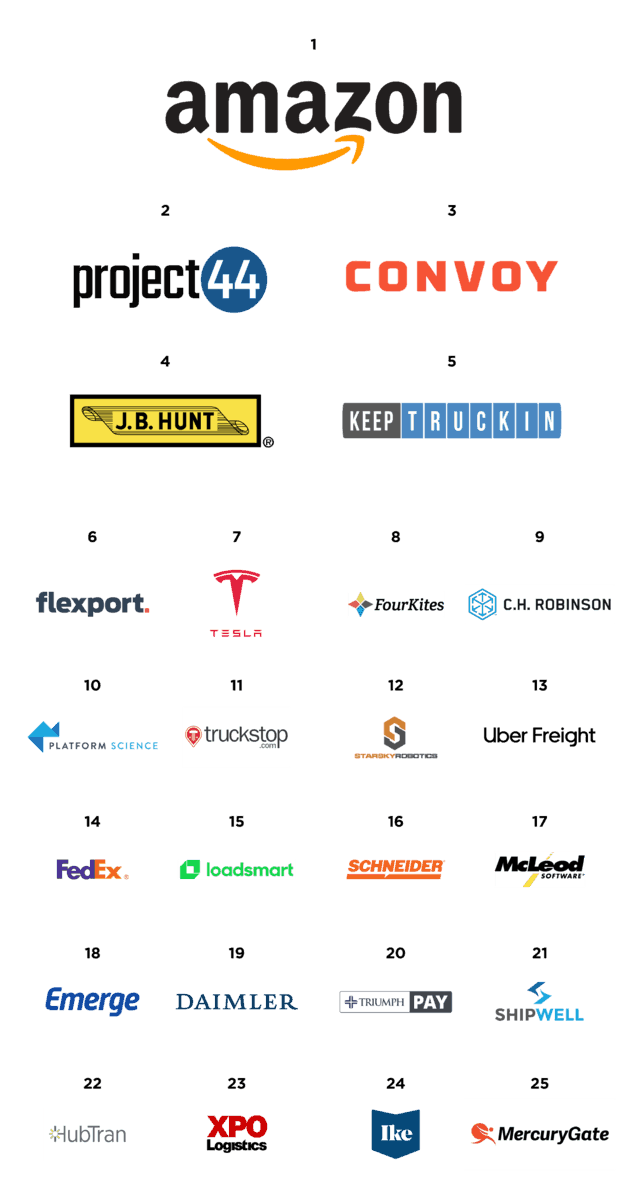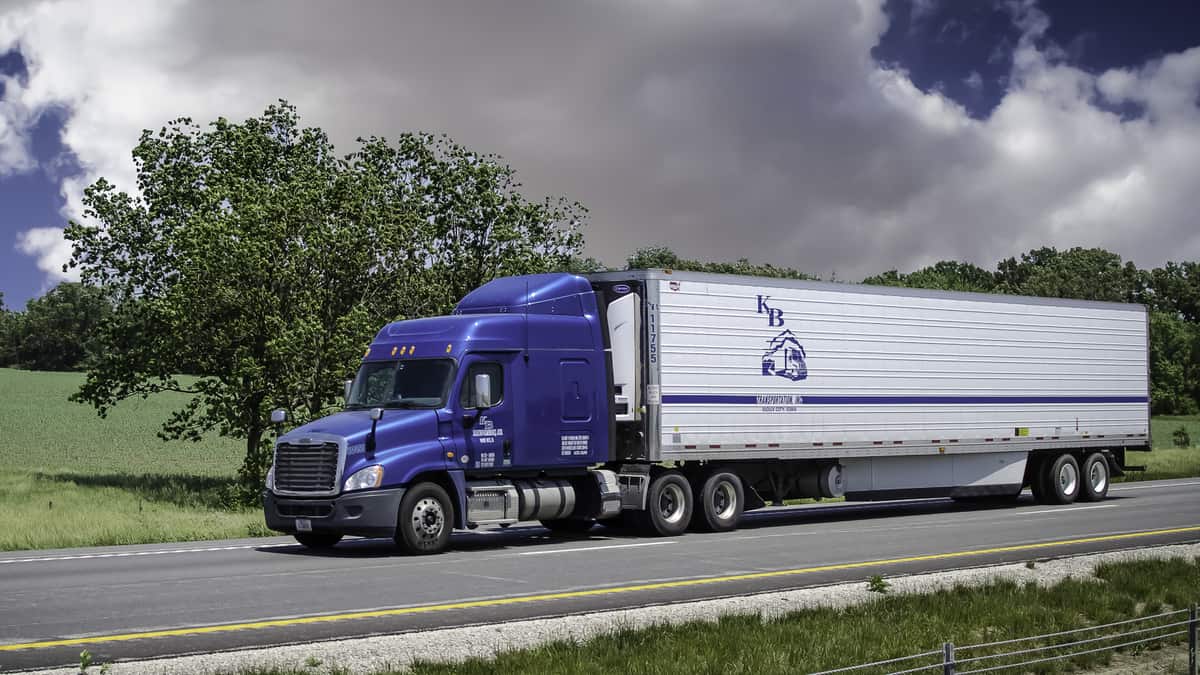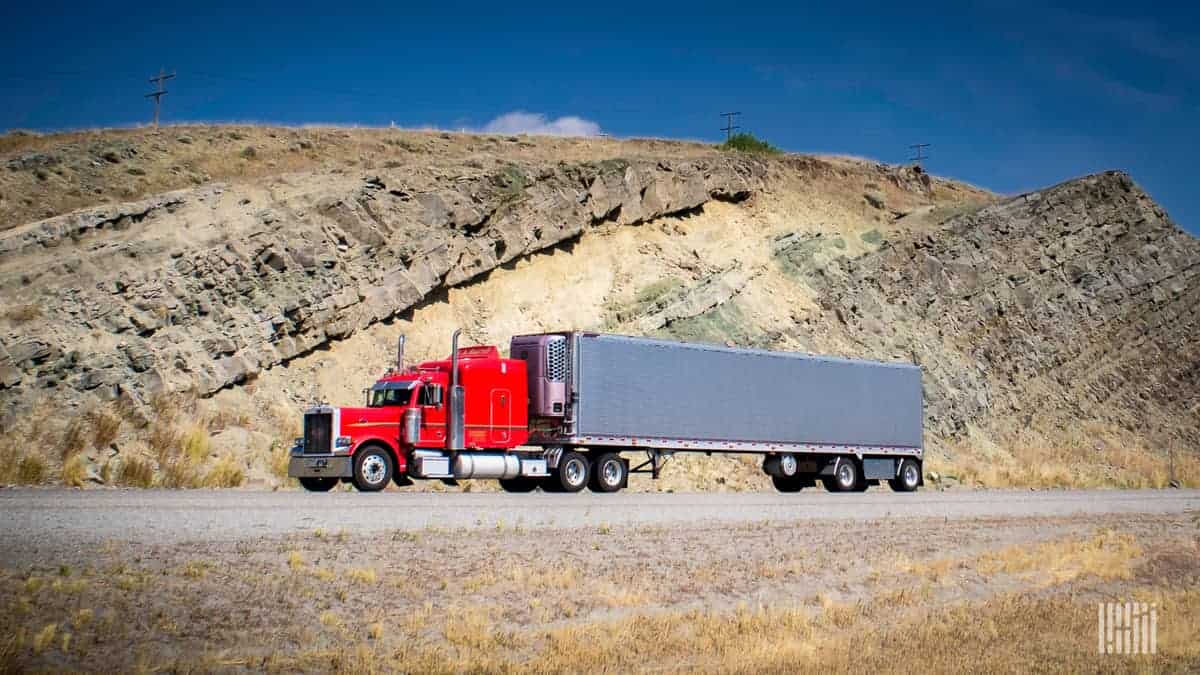Freightwaves recently announced its Freight.Tech25, recognizing the 25 most innovative companies in supply chain and logistics. While Amazon took the top spot for the second straight year, a much younger, lesser-known, company was recognized as the second-most innovative company in the industry for 2019, also for the second year in a row. That company is project44, founded by Jett McCandless in Chicago in 2014.

project44 represents a new breed of logistics technology companies focusing on helping shippers and third parties understand where their cargo is. Through mobile application technology, electronic logging device (ELD) data, and application programming interfaces (APIs), this new category of FreightTech is bringing Amazon– and UberFreight-like visibility to the average shipper, broker and carrier.
“The current delivery economy is much different than it was even five years ago. On-demand delivery apps, quick and inexpensive shipping, and consumer-level visibility are huge factors. Customers expect a certain level of experience at this point and your brand’s perception is on the line if you fail to deliver. We knew that there was no way for retailers, manufacturers and distributors to scale their supply chain operations to that level without better data quality, broad global networks and a platform that facilitates easy access to information and collaboration with partners and customers. After seeing what other industries were doing with the platform model and modern technology like APIs, we knew we could bring that change to the supply chain,” McCandless said when asked why he thought freight visibility platforms (FVPs) were catching so much traction over the past two years.

This category is clearly gaining traction as two of the top 10 in the Freight.Tech25 this year were companies in their fifth year or newer and come from this space (project44 and FourKites). With all of this hoopla surrounding the transportation visibility movement, it may leave some folks asking “What is a freight visibility platform?” That is a question I have heard several times in the past couple of years so I’ll try to explain the basic functions and players in the fast-growing FVP niche.
In short, FVPs are becoming the connective tissue that binds shippers, carriers, intermediaries and all other key stakeholders involved in the execution of a shipment. Providing the technology layer that enables much-needed interoperability, a freight visibility platform becomes the single integration point for the various technology applications that are used to plan, dispatch, track and convey delivery and billing information for enterprise shippers.
Leveraging location data via ELD and drivers’ cell phone positions, as well as critical milestone details pulled from warehouse management systems, transportation management systems (TMS) and dock management platforms, FVPs are providing shippers and carriers with the once opaque details needed to effectively plan their operations as well as to measure performance and reliability.

Years ago, shippers were comfortable with knowing when an order was scheduled to pick up and deliver and not much else about a shipment. In today’s world, everyone expects everything to be delivered yesterday and for free. Therefore, shippers need to provide stakeholders with pick up and delivery information – but more importantly, any variation from the original plan is information that must find its way around the value chain in a hurry.
Freight visibility platforms are meant to do just that; keep everyone informed. Trimble Visibility’s website states, “We don’t just aggregate your data, we thoughtfully present it to you, your customers, and your partner carrier network.” Pick up and delivery ETAs still matter, but in today’s world, the speed in which a provider can notify everyone involved when critical details change is more important now than ever.
Visibility has become table-stakes for transportation service providers since Uber began letting customers track their cars and Amazon provided information to track their drivers. We can track pizzas on apps; we should be able to track semis, cargo vessels, containers, railcars and intermodal containers, right? Well, the answer is not really. At least that has been the answer until very recently.
As smartphones found their way into every driver’s pocket, Uncle Sam was pushing ELDs into each trucker’s cab. The cross-product of these two datasets represents an enormous opportunity to show shippers and carriers where products and assets are, where they are going and a whole lot more. Since 2014 or so, there’s been a tipping point of innovation that’s come from this location data.
So far, four companies have emerged as clear leaders in the Freight Visibility Arms Race, while others are already making strides to take their place at the table or encroaching quickly on expanding services to include freight visibility.
The following companies represent the vast majority of market share and mind space with leading shippers, carriers and third party logistics providers (3PLs) today when it comes to FVPs.
project44 – Arguably one of the most prolific technology companies in supply chain and logistics technology is project44. Founded by LogisticsTech veteran Jett McCandless, project44 began as a technology that focused on bundling APIs for less-than-truckload (LTL) providers. The company’s target audience for that product was large 3PLs that didn’t want to manage and maintain APIs for all of the various carriers they worked with. Since then, project44 has become synonymous with freight visibility. Offering solutions for shippers, carriers and 3PLs, project44 has grown extremely quickly.

As a two-time successful founder (Carrier Direct and GlobalTranz) McCandless saw the opportunity for improved visibility in the supply chain very early on in his career. “The inspiration behind project44 came directly from my experience in transportation and logistics. Even when I started working docks around 20 years ago, I noticed how incredibly dated so much of the technology was. After years in the industry handling various different job functions, I began noticing that not only were there tons of examples of dated technologies and inefficient processes, but innovation to fix these issues was relatively slow. I started reading more and more about APIs and their potential for integrating disparate systems, transmitting data in real-time, and feeding platforms via comprehensive networks. I thought, ‘This could really work for visibility. This is what the industry needs’ and we got to work building what became our Advanced Visibility Platform™,” said McCandless when I spoke with him recently. Since its founding in 2014, McCandless and project44 have raised more than $90 million and employs more than 200 people.
FourKites – Born in Chicago and incubated within one of the most prolific venture capital firms in LogisticsTech (The Pritzker Group), FourKites is the brainchild of Founder & CEO Mathew Elenjickal. An engineer by trade, Elenjickal began his career working in logistics technology for companies like JDA and Oracle. With a keen view of enterprise shippers’ largest problems, Elenjickal kept his company hyper-focused on solving a single pain point and solving it well.

Initially developed for full truckload shipping, FourKites’ platform now offers visibility solutions for LTL, rail, intermodal, parcel and final mile transportation. With offices in Chicago and India, FourKites employs more than 400 people and has more than 250 engineers on staff. The company has raised more than $100 million in venture funding, including a massive $50 million Series C in February 2019 led by August Capital, Bain Capital Ventures, CEAS Investments and Hyde Park Angels. While FourKites’ growth and funding numbers are impressive, what’s more impressive is its roster of clients. With more than 380 enterprise brands on its platform, FourKites’ customer list is like a who’s who of the Fortune 1000.
In a recent conversation with Jason Eversole, Head of Carrier Strategy at FourKites, I was able to get a look into the product roadmap and strategy for FourKites going into 2020. “Our 380+ enterprise-level shippers give us plenty of opinions on the most important business problems to solve. Our customers are incredibly collaborative and have helped lead us to new products such as our recently launched Appointment Manager and Facility Manager tools,” Eversole explained. “These tools were built around business problems that require real-time visibility to support and deliver the best real-time solutions. These products are particularly interesting to me because the business problem was identified in conjunction with shippers but the carrier community will have a tremendous positive impact.”
Eversole continued, “When real-time visibility is injected at the intersection of different functions like transportation and warehousing, truck drivers can get notifications that the product is ready or not ready hours before they arrive for pickup. That driver might be able to hit a truck stop and refuel instead of waiting in a shipper’s parking lot. Just like we want our shipper customers to have recovery options when they are notified of a potential delay, we want drivers and carriers to have options that lead to the better utilization of their time. My goal as the head of Carrier Products at FourKites is not to create a new TMS or some new system to manage a portion of the carrier business. It’s to leverage our massive ecosystem to drive positive change for the carrier and driver community.” Eversole said his mission is to build a product that addresses the needs of all stakeholders.

It’s collaboration like this that helps FourKites create new products to increase its presence and stickiness with its clients. “Companies in this space are going to need to stay flexible and adapt as the market changes. If they don’t they’re going to be in trouble,” said Eversole when I asked where FourKites’ product inspiration comes from. With several new products launched in 2019, it’s clear FourKites is focused on where the industry is going and looks to meet shippers, brokers and carriers where they are while taking them into the future. “FourKites is for everyone – shippers, carriers, brokers and owner-operators,” said Eversole.
MacroPoint – Founded in 2011 and headquartered in Cleveland, Ohio, Macropoint was one of the first companies to jump into the freight visibility space, then referred to as freight tracking. Originally leveraging driver phone locations and eventually adding GPS information from ELDs as well, Macropoint arguably defined the category and absolutely had the first-mover advantage. Take advantage it did, raising $44 million in venture capital on its way to selling to Descartes (TSX:DSG) (Nasdaq:DSGX) for more than $100 million. With multiple modes of transportation tracking in its offering, MacroPoint now also offers its carrier base smart capacity matching, much like products offered by TruckerTools and Truckstop in an ongoing battle to help small- and mid-sized brokers and carriers “Uberize.”

(Photo credit: Jim Allen/FreightWaves)
10-4 Systems – Incubated and developed inside of GlobalTranz in 2012, 10-4 Systems eventually spun out in 2016 and was originally built to Uberize the experience of booking freight for brokers. Founded by Andrew Leto and Travis Rhyan, former GlobalTranz founder and executive respectively, the company caught traction early with its elegant design and promise to make finding, booking and tracking trucks more efficient for all brokers. An inherent conflict of interest existed for brokers other than GlobalTranz as large 3PLs stayed away from the original product, which was similar to the private freight marketplaces we are seeing today.
As the market matured and the need for visibility in supply chain grew, it was clear that 10-4 had a life of its own outside of GlobalTranz or the freight brokerage community as a whole. The real inflection point came for 10-4 Systems, and the freight visibility space in general, in 2016-17. That is when ELDs became a requirement and almost overnight, there was a new massive source of truck location data available via APIs. That’s about the time 10-4 Systems really started to grow with shippers, carriers and brokers. 10-4 Systems was acquired by Trimble in September 2017 for an undisclosed amount. 10-4 Systems lives on today as Trimble Visibility.

As the need for real-time data continues to increase, consumers and businesses will likely never go back to being okay with not knowing where their products are. If Amazon has taught us anything, it’s that supply chain can be a competitive advantage but that is predicated on having all the data all the time. Businesses continue to find more and better ways to use their data and supply chain data is among the largest opportunities for improved company performance for most enterprises. With all of the focus on logistics in business today, there is no question that freight visibility platforms provide the information executives need to make their companies run more effectively.











Sadda Truck
very niceonline loading services